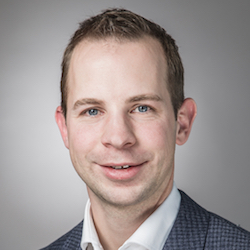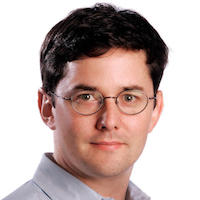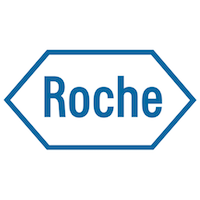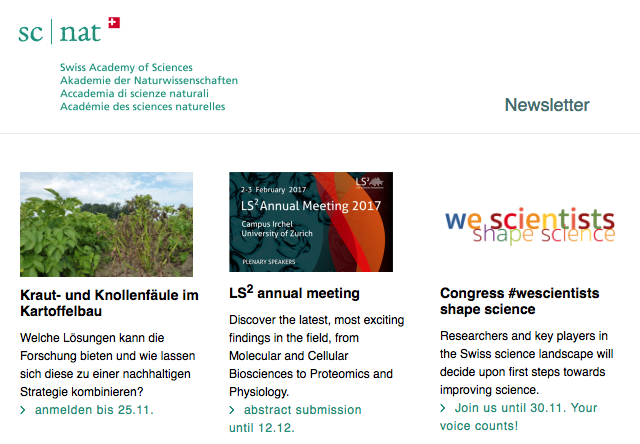SCS Prize Winners 2017
It’s our pleasure to announce the winners of the 2017 SCS awards. We would like to sincerely congratulate all winners and we are looking forward to the ceremonies that will take place at one of our events during the next year.
Werner Prize 2017
The Swiss Chemical Society awards the Werner Prize 2017 to
 Prof. Kevin Sivula, EPF Lausanne,
Prof. Kevin Sivula, EPF Lausanne,
for his significant contributions to the advancement of materials and methods for photoelectrochemical energy conversion
and to
 Prof. Christof Sparr, University of Basel,
Prof. Christof Sparr, University of Basel,
in recognition of his very creative contributions to the asymmetric synthesis of single atropisomers of hindered aromatic compounds using organocatalysis.
The award ceremony and the lectures will take place during the SCS Spring Meeting in Bern on April 21, 2017.
Grammaticakis-Neumann Award 2017
The SCS awards the Grammaticakis-Neumann Prize 2017 to
 Prof. Robert Knowles, Princeton University,
Prof. Robert Knowles, Princeton University,
for expanding the methodology in organic synthesis by new processes founded upon visible light mediated Proton-Coupled Electron Transfer (PCET).
The award ceremony and the lecture will take place during the SCS Fall Meeting in Bern on August 21-22, 2017.
Sandmayer Award 2017
The SCS awards the Sandmeyer Prize 2017 to the team from F. Hoffmann-La Roche, namely
 Dr. Stefan Hildbrand,
Dr. Stefan Hildbrand,
Dr. Gösta Rimmler,
Dr. Daniel Fishlock,
Dr. Pankaj Rege,
Dr. Carsten Peters,
Dr. Christian Mössner,
Dr. Ralph Diodone and
Dr. Markus Schantz
for the development of an efficient industrial synthesis of Idasanutlin (a MDM2 antagonist for treatment of cancer) via a Cu(I)-catalyzed [3+2] Asymmetric Cycloaddition.
The award ceremony and the lecture will take place during the SCS Fall Meeting in Bern on August 21–22, 2017.
Balmer Prize 2017
The Swiss Chemical Society awards the Balmer Prize 2017 to
Mr. Hansrudolf Dütsch, Zürich,
for his exemplary engagement over many years in the field of further education of high school teachers and for his idea to develop and run a web shop for innovative and illustrative chemistry experiments.
The ceremony is planned to be held during the event “Future of Chemical Education 2017, in Bern on August 21, 2017.
Dr. Max Lüthi Award 2017
The SCS awards the Dr. Max Lüthi Prize 2017 to
Mrs. Sonia De Andrade, ZHAW,
for her Bachelor Thesis and her contributions to the advancement and validation of printable biomaterials and their potential use as tissue models.
Mrs. De Andrade will give a talk about her thesis at the BioTech 2017 conference at ZHAW in Wädenswil on September 8, 2017 where also the ceremony will take place.
David Spichiger, SCS
29.11.2016
Reto Naef and Topadur Pharma AG win the Swiss Technology Award
With innovation, creativity and the latest technology, the winners of the Swiss Technology Award are able to move into global markets and continually create new jobs. We would like to take this opportunity to congratulate all the winners for their success.
 Winner 2016 in the «Start-ups» category is Reto Naef, Topadur Pharma AG.
Winner 2016 in the «Start-ups» category is Reto Naef, Topadur Pharma AG.
Topadur Pharma AG develops two promising drugs in the area of wound healing for the treatment of non-healing wounds and to avoid excessive scar formation in burn wounds. The active substance “TOP-N53” could offer all diabetics with chronic foot wounds essential support in avoiding amputations and extend their lives. The drugs produced by Topadur cover major medical requirements that burden the global healthcare budget to the tune of more than USD 24 billion every year.
Reto Naef founded Topadur Pharma AG in 2015 and engage 8 employees. More details about Topadur Pharma AG are available on the website of the company on www.topadur.com.
Links:
- Winners Swiss Technology Award: http://www.en.swiss-innovation.com/winners
- Information Swiss Innovation Forum 2016: http://www.en.swiss-innovation.com/information
David Spichiger, SCS
29.11.2016
Newsletter SCNAT, November 2016
Topics
- Kraut- und Knollenfäule im Kartoffelbau
- LS2 annual meeting
- Congress #wescientists shape science
- SWIFCOB 17 «Bewahren oder Gestalten? Perspektiven für die Biodiversität in einem dynamischen Umfeld»
- Science on Stage: 4 Projekte nominiert
- SNF-Wettbewerb für wissenschaftliche Bilder
Click here to browse to the online Newsletter
David Spichiger, SCS
22.11.2016
EuCheMS Brussels News Update, November 2016
European Highlights
EuCheMS at the MEP-Scientist Pairing Scheme
Earlier this month at the European Parliament, Members of the European Parliament (MEPs) and scientists met in a series of bilateral meetings, and at the Science and Technology Options Assessment (STOA). EuCheMS was represented by Prof. David Cole-Hamilton, paired with MEP Catherine Stihler, and by Prof. Pavel Drašar, paired with MEP Pavel Poc. These…
read more
Seville International Chemistry Declaration 2016: An Invitation to Sign
In a world that is becoming increasingly populated and urbanized, and which will require 30% more water and 40% more energy by 2030, we are faced with innumerable social challenges that require a firm commitment to research and innovation for their resolution. It will be chemistry as a discipline, with the fundamental and necessary support…
read more
Paris Agreement Enters into Force
The Paris Agreement legally entered into force on 4 November. This historic event occurs less than a year after the landmark agreement was adopted in Paris and just days ahead of the UN climate conference in Marrakech, Morocco. The Marrakech conference aims to demonstrate that commitments made in Paris towards a low-carbon economy are being…
read more
Science Meets Regions
The first edition of Science Meets Regions took place at the Committee of Regions (CoR) earlier this month and discussed how findings from research can serve as a basis for better decision-making on the regional level. During the event, over 200 politicians and scientists from EU regions presented their experiences of some pilot policy-research exchanges…
read more
MEPs Call for EU Limit on Industrial Trans Fats in Food
The EU should place mandatory limits on industrially-produced trans-fatty acids (TFA) which may increase the risk of cardiovascular disease, infertility, Alzheimer’s, diabetes and obesity for consumers, says a resolution voted on Wednesday. TFA intake is mostly linked to consumption of industrially produced, partially hydrogenated oils. MEPs mention the fact that, according to the European Commission,…
read more
New Research Partnership in the Mediterranean on Food and Water Sustainability (PRIMA)
The European Commission has presented a proposal for a Partnership for Research and Innovation in the Mediterranean Area - PRIMA. The first partnership of its kind in the Mediterranean basin aims to develop much-needed novel solutions for sustainable water management and food production. The Commission's proposal already includes Cyprus, the Czech Republic, Egypt, France,…
read more
Council Conclusions on Eastern Partnership
The Council of the European Union discussed and adopted conclusions on the Eastern Partnership which encompasses Armenia, Azerbaijan, Belarus, Georgia, the Republic of Moldova and Ukraine. In its conclusions, the Council mentions that “Cooperation in education, science, research, culture, training, youth and innovation is crucial for deepening mutual understanding, strengthening institutions, and promoting modernisation and…
read more
Education and Training Monitor 2016 Released
This year’s Education and Training Monitor explores societal challenges in more depth and addresses migration, demography and the key competences that education should help develop. One of the highlights of the report is the increase of tertiary level completion rates across the EU in 2015. Finally, via the cross-national comparison of education systems and in…
read more
New International Standard for the Quality of Reference Materials
In Europe EU Regulation (EC) No 765/2008 sets out the requirements for accreditation and market surveillance and demands that accreditation has to be based on harmonised International Standards. In this context, the International Organization for Standardization (ISO) has published ISO 17034 which outlines the general requirements which producers of all types of reference materials must…
read more
New Action Plan on Antimicrobial Resistance (AMR)
The EU Commissioner for Health and Food Safety, Vytenis Andriukaitis confirmed the renewed commitment in tackling antimicrobial resistance (AMR) that is one of the biggest health threats facing humanity today.
The new Action Plan will take the form of a Commission communication to the European Parliament and the Council and builds on the previous…
read more
EFSA Models and other Resources at the Knowledge Junction
Scientific models used by the European Food Safety Authority (EFSA) over the last 15 years have been brought together in a new EFSA community: the Knowledge Junction. The models can be shared and cited and you can submit your own. A selection of these tools is also available as a web applications on the…
read more
Canadian Researchers to Join ERC Teams in Europe
Last month, a new agreement between Canada and the European Union was concluded to encourage talented Canadian researchers to join European Research Council (ERC) teams in Europe. Commissioner for Research, Science and Innovation Carlos Moedas and President of the Social Sciences and Humanities Research Council of Canada Dr Ted Hewitt (though the agreement also applies…
read more
Innovation & Entrepreneurship
KETs Observatory Updated with New Interactive Tool
This web tool supports business stakeholders and policy makers at EU, national and regional level in the development of policies regarding advanced technologies in Europe. The new Key Enabling Technologies (KETs) Observatory website is now live. The improved site provides visitors with easier access to data on the deployment of KETs in Europe and worldwide…
read more
“Use Maps” for a Better Registration of Chemicals
These “use maps” help registrants to improve the quality of their registrations, in particular their exposure scenarios. The European downstream user industry has now started to publish sectoral use maps to help manufacturers and importers of chemicals register their substances. The first use maps for the adhesive and sealant industry; soap, detergents and maintenance products;…
read more
New Equity Fund Under the COSME Programme
COSME, the EU programme for the Competitiveness of Enterprises and Small and Medium-sized Enterprises (SMEs) running from 2014 to 2020, has recently set up the Equity Facility for Growth (EFG). EFG is dedicated to investments in risk-capital funds that provide venture capital and mezzanine finance to expansion and growth-stage SMEs, in particular, to those…
read more
Consultations and Roadmaps
Public Consultation on the Active Substance Trifloxystrobin
EFSA will assess all comments from interested parties regarding the active substance trifloxystrobin. Input is requested on the following: physical/chemical properties; details of uses and further information; methods of analysis; mammalian toxicology; residues; and environmental fate and behavior. Deadline: 10 January 2017. Website: http://www.efsa.europa.eu/
read more
Public Consultation on Policy Options to set Minimum Quality Requirements for Reused Water in the European Union
The European Commission is launching this consultation to collect the views of stakeholders and citizens on the policy options to set minimum quality requirements for reused water in the European Union. The objectives of the consultation are 1) to gather information and data that cannot be found through desk research and additional sources of evidence…
read more
Public Consultation in Relation to the REACH REFIT Evaluation
The objective of the public consultation is to obtain stakeholder views on the general approach to the 2017 Registration, Evaluation, Authorisation and Restriction of Chemicals (REACH) Regulatory Fitness and Performance (REFIT) evaluation and to collect stakeholder views on the strengths and weaknesses of REACH as well as any potentially missing elements. Deadline: 28 January…
read more
Call for Data on Ingredients: Salts of O-Phenylphenol
In order to prepare requests for scientific opinions to the Scientific Committee on Consumer Safety, interested parties are invited to submit any relevant scientific information on the safety of Sodium o-Phenylphenate (CAS 132-27-4), Potassium o-Phenylphenate, (CAS 13707-65-8) and MEA o-Phenylphenate (CAS 84145-04-0) as preservative and non-preservative ingredients in cosmetic products and, in particular, data regarding all…
read more
Call for Funding and Awards
Development of Next Generation Biofuel Technologies
Carbon Dioxide Utilisation to Produce Added Value Chemicals
Selection of Hosting sites for EFSA’s European Food Risk Assessment Fellowship (EU-FORA) Programme
Call for Proposals for ERC Consolidator Grant
Capacity Building in the Field of Higher Education 2017
Innovative Solutions for Sustainable Food Packaging
Erasmus Mundus Joint Master Degrees
Joint Actions to Foster Innovative Energy Solutions in Renewable Energy Technologies
EuCheMS Events
CCE 2017 – 16th EuCheMS International Conference on Chemistry and the Environment
EICC-4 - 4th EuCheMS Inorganic Chemistry Conference
ISSNP 2017 – International Summer School on Natural Products
EuCOMC 2017 – 22nd European Conference on Organometallic Chemistry
Other Events
European Antibiotic Awareness Day – “The Future is Now”
4th Meeting of the EMA Network
Spreading Excellence and Crossing the Innovation Divide
ECIBC Plenary 2016: When Science and Policy Collaborate for Health
What Future for EU-Research Policy: Taking Stock and Looking Ahead
9th Conference of the European Strategic Energy Technology Plan
Latest issue of EuCheMS Newsletter
Read it here! Some of the highlights are:
- ECC6 in Seville
- EuCheMS General Assembly
- EuCheMS-American Chemical Society MoU
- Seville Declaration on Chemical Weapons
David Spichiger, SCS
17.11.2016
The Seville International Chemistry Declaration 2016
 The Seville International Chemistry Declaration 2016, was signed in Seville at the 6th EuCheMS Chemistry Congress on September 13th, 2016, having as its first signatoires Carlos Negro (Foro Química y Sociedad President and Co-Chairman of ECC6), Jean Marie Pierre Lehn (Nobel Laureate), Antón Valero (President of Spanish Chemical Industry Federation), Ehud Keinan (President of EuCheMS Member, the Israel Chemistry Society), Robert Parker (CEO of the EuCheMS Member, the UK Royal Society of Chemistry) and Harmut Frank (University of Bayreuth, and Chair of EuCheMS Working Party of Ethics in Chemistry).
The Seville International Chemistry Declaration 2016, was signed in Seville at the 6th EuCheMS Chemistry Congress on September 13th, 2016, having as its first signatoires Carlos Negro (Foro Química y Sociedad President and Co-Chairman of ECC6), Jean Marie Pierre Lehn (Nobel Laureate), Antón Valero (President of Spanish Chemical Industry Federation), Ehud Keinan (President of EuCheMS Member, the Israel Chemistry Society), Robert Parker (CEO of the EuCheMS Member, the UK Royal Society of Chemistry) and Harmut Frank (University of Bayreuth, and Chair of EuCheMS Working Party of Ethics in Chemistry).
| Read the declaration |
| Support the declaration and undersign |
David Spichiger, SCS
03.11.2016
Page 103 of 299


